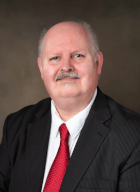Buffett-backed BYD Will Supply Batteries To Tesla
CHINA REPORT

BEIJING— Chinese electric vehicle (EV) and battery maker BYD is going to become Tesla’s battery supplier for the first time, a senior executive at the company backed by Warren Buffett’s Berkshire Hathaway said recently.
“Tesla is a very successful company. BYD has great respect for Tesla and raises our hat to it,” said BYD’s executive vice president Lian Yubo in an interview with the state-owned news channel China Global Television Network (CGTN), when he was asked his thoughts of China-made vehicles in comparison with Tesla. “(Tesla CEO) Musk and us are good friends now as we are preparing to supply batteries to it very soon. We learned a lot from Tesla,” Lian added, noting the U.S. rival’s positioning itself as a high-end EV brand.
Lian’s remark suggests BYD is set to be the second China-based battery supplier of Tesla next to CATL, the world’s largest EV battery company. LG Energy Solution, the South Korean battery maker second to CATL, and Tesla’s long-time partner Panasonic currently are another two battery makers in Tesla’s supplier list.







